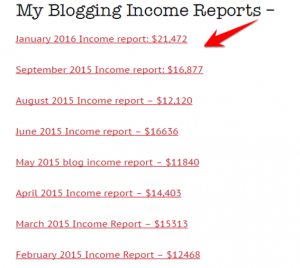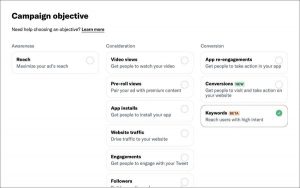If you are in the business of blogs or even familiar with the sphere, you would know Buzzfeed is bigger than The New York Times when it comes to traffic. Mashable, Huffington Post, Business Insider, and Lifehacker are bigger than many premier news websites when it comes to visitor counts.
We are all awed by the success of these blogs and websites. We also want to be there, shining in the glory of a fan base. Life would have been so easy if we created content and visitors came pouring from all sides, but obviously, it isn’t the case. These blogs have their monthly traffic in millions, out of which the majority is of repeat visitors.
In the day to day business of content websites, we create content that is really good. Some of it is extremely good, but then nobody comes to read it. We market the content aggressively and feed fodder to the marketing channels and finally get visitors.
Does that translate into success? No.
Just to give you a perspective, Google Plus has more than 1.6 billion registered users and less than a third of them use it on a monthly basis, leave alone daily or even weekly.
The point being made is – your goal is not drawing visitors to your website but to retain them, engage them and compel them to keep coming back.
Why should engagement take priority over getting new traffic?
Valid point, but not so valid, in fact. There are quite a few reasons why retaining is always a better strategy. I would highlight some of them:
- Getting new visitors every time needs a lot of marketing effort and budget.
- You can never have a user base to bank upon at any point in time.
- If the visiting user isn’t engaged on your website, it will result in higher bounce rate, irking Google and eventually your organic search rankings and free traffic.
According to a Gartner report, in the digital space, a business spends around 55% of its marketing budget in acquiring new customers while 45% goes into retaining the existing ones. The data may look similar in a bird’s eye view but dig deeper into the actual numbers and the number of existing customers along with their business contribution, outnumber the new customers by leaps and bounds.
The icing on the cake is – when you implement engagement as a retention strategy, the cost is pulled further down and retention starts making sense more than ever. This post aims to highlight some of the offsite and onsite engagement tactics for your business to retain your customers at low costs for long and do more with your marketing budget.
How do I engage visitors on my blog?
Now that is a good question to ask and ponder. I have been a follower of the good, visitor of a few bad and observer of many ugly websites. Through my observation and experience, I have listed some of the steps that can be implemented to give a boost to the engagement of people that visit your website.
1. Make your blog social friendly
We are social beings, even in the virtual world. If your content is worth sharing, I will want to share it with the people I know, the people I want to impress or the people I want to make laugh. But I will not go through the tedious process of copying your link, opening my social networks in three different tabs and then sharing with my network. No one will go through the process until it’s you or your girlfriend who loves you unconditionally.
The fundamental step you need to take is, make your content shareable and the immediate next step is to make the sharing process as easy as it can get for the user.
The way to do it is enable social login to your website and not just via one social account, encourage your user to connect everything from Reddit to Quora to Digg to Tumblr. You never know where his influence may be maximum.
Read more about social media plugins and extensions:
- The 9 Best WordPress Social Media Plugins Of 2015
- Top 10 social extensions for Joomla
- The Best Social Media Modules For Drupal
2. Encourage Signups/ Logins/ Profile Completion
While there may not be some rocket science behind it, still people often leave it to the will of the user to sign up or login if he returns to the website. Today, blogs without a ready sign-up form are archaic if not extinct already. For almost all the content management platforms, there are small, free plugins available to display a header and footer with a form for sign up or collecting emails.
You can easily design custom notifications by integrating such tools, based upon your needs and budget. Incentivized sign ups are one of the most convenient and effective ways of getting visitors to sign up. Freebies never get out of fashion. Remember, the idea is to get them from being a visitor to being a user and then everything else will follow.
The sign up may or may not hook the visitor to the website, but it gives a sense of belongingness for sure. You can always reach back with offers, reminders and newsletters to get him/her back on board.
Profile completion makes him remember your website, and you get to know your user better which in turn enables you to push targeted messages/offers to the user to cling him to your website.
Incentivizing profile completion, as a strategy is being used by quite a few websites world over. The 2 examples that stand out to me are of Glassdoor and Quora. Quora, essentially a content based website, prompts you to login for any further reading after the first page. Have a look:
3. Encourage User Comments
There are usually three voices about your product/ post; your advertisement, your content, and your user’s comments or reviews. A random user trusts the three voices in reverse order of their mention. You wouldn’t be surprised to see the highest selling product on any e-commerce website would not be the one offering the highest discount, but the one that had garnered the highest number of positive reviews.
Same goes for the blogs – focus on conversations. One of the beginner lessons for blogging is to engage with your readers in the comments. Make your visitors feel heard, make them feel valued and they will return the favor.
Moz.com, the widely appreciated company on Search Engine Optimization and Inbound Marketing, does it like this One of Moz’s blog post, and it doesn’t surprise me to see a similar set of people commenting on different posts. They have made it so engaging that the reader base has grown to be a community rather than just visitors. Have a look how, Rand Fishkin, CEO of Moz replies to the comments personally:
Sometimes, even if you make all the arrangements for your readers to comment upon your content, nobody actually bothers to do it. In times like these, anonymous comments come in handy. You can have your peers, colleagues, or even you can comment anonymously on your post. These comments can be a critique, praise or any positive addition to the post. According to a study by the University of Wisconsin-Madison, people behave according to a pre-existing setting. So, a series of positive comments can trigger people to comment on the same lines and you have a discussion rolling.
4. Suggest what to do next
The visitors to your site may come through various routes and the discovery forms a major chunk of those visits. If a visitor reads a post fully, it means he was interested in the post. It may also mean that he is interested in the category or similar posts. The success that Amazon drew just by suggesting similar and complementing products to purchase is a testimony to the success of the tactic. A similar approach is used by AOL in all of its blogs.
The visitor is often clueless what he should read or what you write. Take him out of his peril, show him what could interest him and he would hop on the lead, giving you an engaged user and your website a lower bounce rate.
Do – Fail – Redo
The steps that I mentioned above, maybe the first you would implement but make sure that they aren’t the last. The efforts are effective, and there isn’t a flicker of doubt about it, but it isn’t the one stop solution.
You need to listen to your set of visitors and act upon it. It is always helpful to know what did the visitor like or disliked about your website. Improving according to the feedbacks not only makes the website a pleasant destination but also makes the user feel heard.
The feedbacks can be collected by using a variety of SaaS tools available in the market. We at WebEngage are pioneers of the trade.
You must have implemented certain tactics and tricks to engaging your visitor on your site. Tell us if you failed and we will help you. Tell us if you succeeded and help us and the community.
This post first appeared on WebEngage’s Marketing Blog.
(129)












